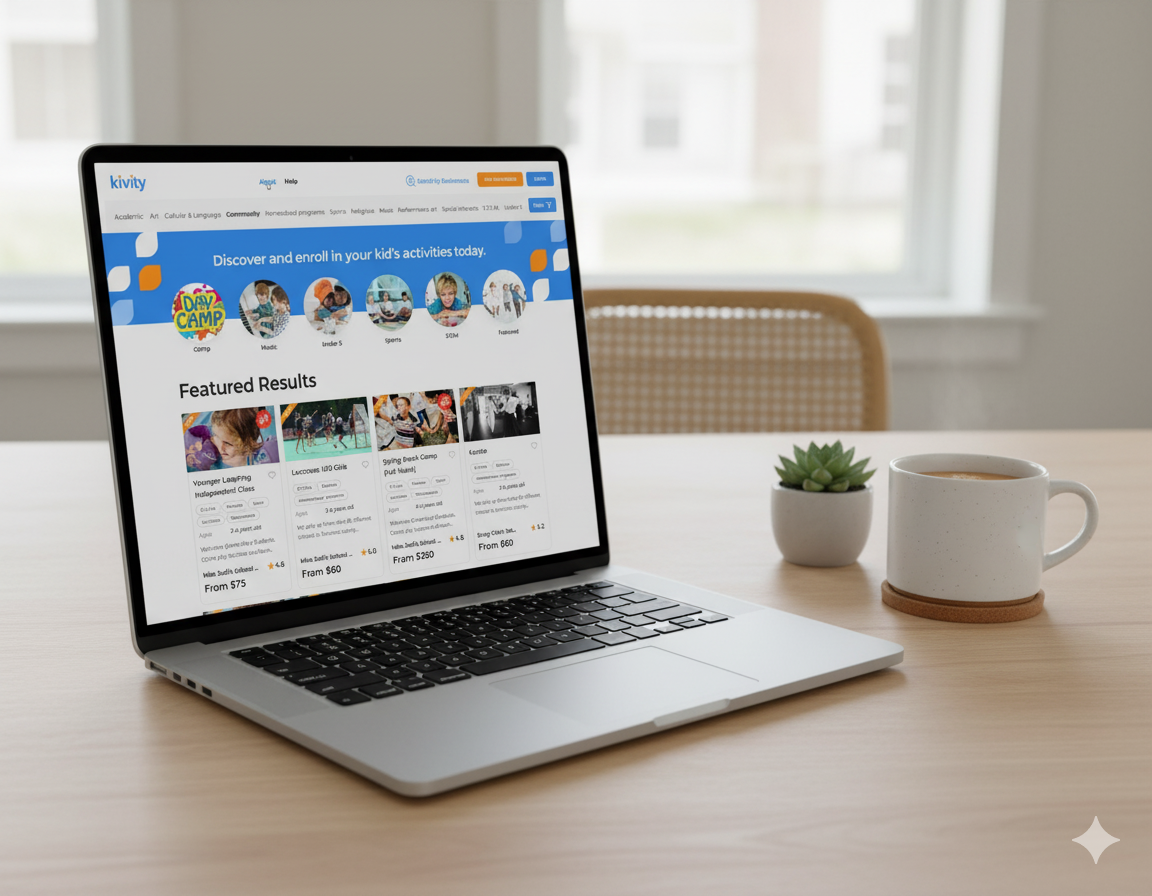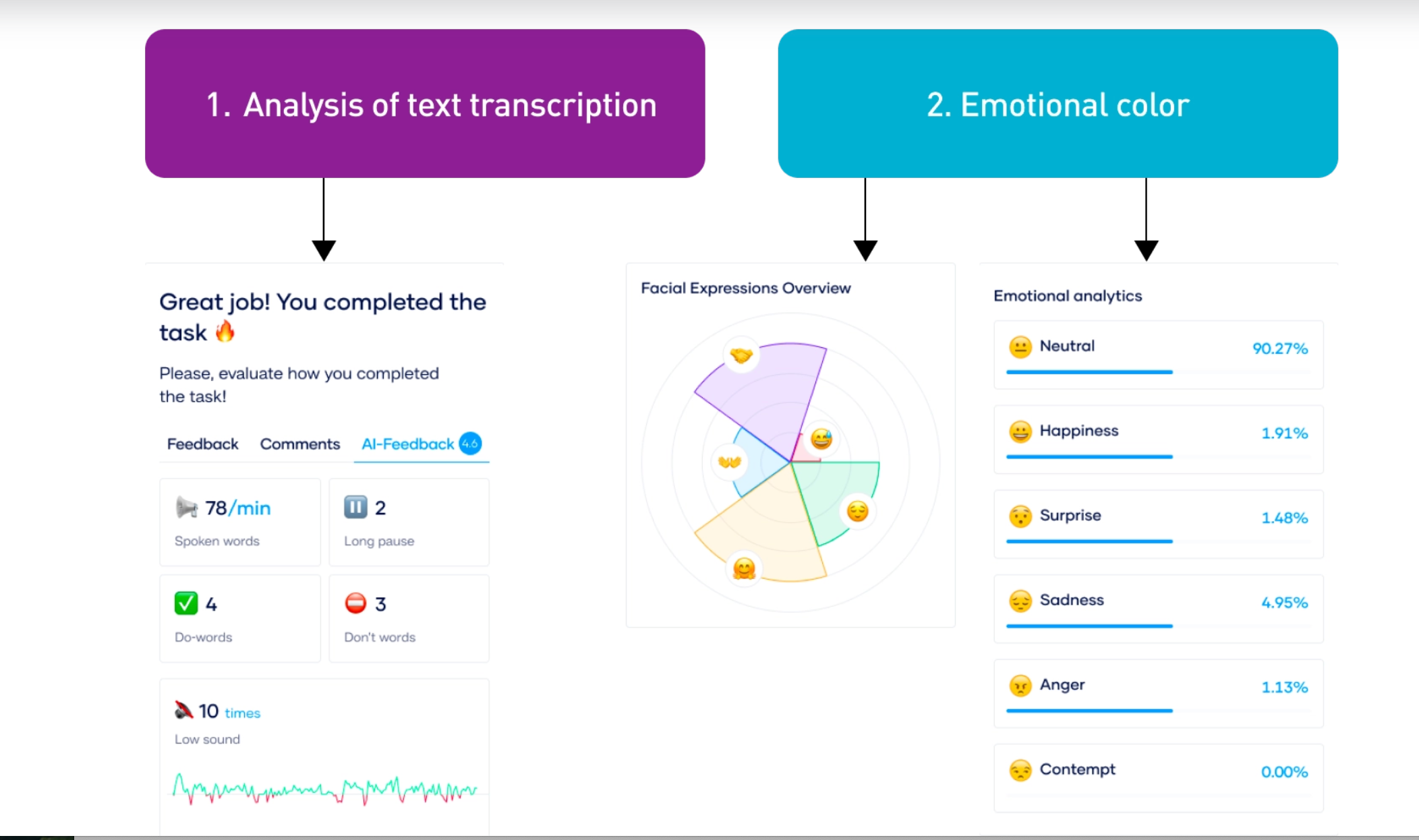Introduction: Why Outcomes Matter More Than Features
In education technology, it’s easy to get lost in features. Platforms advertise dashboards, AI assistants, gamified lessons, or offline modes. Those elements matter - but what clients really ask us is much simpler: Will this save time? Will it improve learning? Will it make life easier for teachers, students, or managers?
That’s the real measure of success. A tool that reduces onboarding time for a sales team by 30% is worth more than one with ten unused functions. A secure platform that lets a university run exams for thousands of students without hiring dozens of proctors creates lasting value beyond any technical spec sheet.
Over the years, we’ve built EdTech products for children, schools, universities, and global companies. Each one started with a feature request, but the impact went much further. In this article, we’ll share how those projects translated into outcomes - the kind of results that build trust, scale programs, and make education more effective at every stage.
From Childhood to Corporate Training: A Broad Impact
Our work in EdTech spans the full learning journey. We’ve built platforms that children and their parents use to book after-school activities, tools that teachers rely on to deliver lessons consistently, and systems that help universities and companies scale learning with confidence.
Taken together, these projects tell a simple story: education is no longer tied to one stage of life. It begins with Kivity or Parenteam in early childhood, continues with 99Math and Kiddom in school, expands with Casers or AI Mentor at university, and evolves into corporate training with HeyPractice and Kedzoh.

Each of these products started from a client’s immediate need - scheduling, engagement, or assessment - but the outcomes stretched far beyond. They saved hours of repetitive work, cut onboarding times, built trust with families, and allowed institutions to grow without sacrificing quality.

By covering this entire spectrum, we’ve seen first-hand how digital tools can shape learning at every age, and how the right software decisions can ripple across classrooms, campuses, and companies.
Case Stories with Outcomes
| Project / Client | Initial Request | Outcome Delivered | Business / Educational Impact |
|---|---|---|---|
| HeyPractice (Corporate training) | Help sales teams practice communication skills with measurable feedback. | AI-driven feedback on pitch recordings and progress dashboards. | Reduced SDR onboarding time by ~30%; managers saved ~20 hrs/month in coaching time; clearer performance data for teams. |
| AI Mentor (University microlearning) | Scalable, secure exam platform with proctoring. | WSAG-compliant system with automated exams, AI transcript analysis, and video proctoring. | Saved hundreds of staff hours annually in exam supervision; enabled universities to expand online programs without compromising credibility. |
| 99Math (K-12 math platform) | Reliable infrastructure for global live math games. | Strengthened DevOps, improved scalability, reduced downtime. | Teachers gained trust in live sessions; smoother gameplay boosted student engagement; supported international growth. |
| Kiddom (Digital curriculum) | Unified lesson planning across in-class and remote learning. | Centralised assignments and analytics tools. | Teachers saved ~5 hrs/week in prep; schools delivered consistent lessons across hybrid classrooms. |
| Kivity (Extracurricular marketplace) | One platform for parents to book and manage activities. | Smart search, booking, payments, calendar sync. | Conversion rates improved by 20–25%; providers reached more families; parents saved time on enrolments. |
| Parenteam (Childcare swap platform) | Community-driven childcare management. | Mobile-first app with scheduling, trust ratings, and points system. | Families saved $150–200/month on childcare; stronger adoption through transparency and verified profiles. |
| Kedzoh (Employee training) | Mobile-first learning that works offline. | Team lessons with analytics and reporting. | Training became accessible in low-connectivity areas; managers tracked performance even for remote teams. |
| Casers (Talent acquisition via challenges) | Create case competitions linking students with companies. | Platform for collaborative case solving with certificates and rewards. | Companies accessed a wider talent pool; students gained practical experience; universities strengthened employer connections. |
Why Those Outcomes Emerged
When you line up all the projects, the feature lists look different — one platform needed calendar sync, another asked for AI proctoring, another for offline access. But behind these details, the same forces were shaping client requests.
Rising expectations. Learners and employees are used to consumer apps like YouTube, Duolingo, or Netflix. They expect the same smooth experience in education: quick, intuitive, and engaging.
Hybrid by default. Since the pandemic, “online vs. offline” is no longer a choice. Clients now assume learning has to work in classrooms, at home, and on mobile, without creating double work for teachers.
Pressure to prove outcomes. Schools and companies are asked to justify budgets. That’s why dashboards, reporting, and analytics show up in almost every project - they provide evidence of progress, not just activity.
Efficiency under constraints. Institutions run on tight budgets, companies watch ROI closely. Requests for automation and AI aren’t about trends, but about saving staff hours and stretching resources further.
Fighting for attention. Learners are flooded with options. To keep them engaged, EdTech products need elements that motivate - gamified tasks, microlearning formats, personalised paths.
These pressures explain why the same themes repeat across different projects. What looks like a request for a feature is often a signal of something bigger: the demand for efficiency, trust, and meaningful results.
The AI Factor: From Features to Agents
AI has been the biggest shift in how EdTech platforms deliver outcomes. A few years ago, clients asked for individual features — automatic grading, adaptive learning, or better analytics. Today, they ask how AI can take over whole parts of the process and deliver results on its own.
We’ve seen this first-hand.
- HeyPractice used AI to give sales reps instant feedback on clarity, pacing, and confidence. What used to take hours of manager coaching now happens in minutes, freeing up time and accelerating onboarding.
- AI Mentor showed how universities could scale exams without losing credibility. Automated proctoring and AI transcript analysis cut hundreds of staff hours while ensuring compliance and academic standards.
- With Bridge, our internal suite, we explored how AI agents can live inside products as knowledge assistants, embedded chat widgets, or training copilots — shifting from being a feature add-on to becoming the core experience.
This shift is bigger than education. SaaS used to be about bundling features into one platform. Now, a single AI agent can deliver more outcome than an entire system built a few years ago. Instead of logging into a platform, learners interact with an assistant that generates content, analyses performance, and adapts the learning path in real time.
For clients, the value isn’t just faster adoption. It’s higher ROI. One well-trained AI agent can reduce staffing costs, personalise learning for thousands, and keep users engaged far better than static software ever could. The focus is no longer what features a platform has, but what measurable outcomes its AI can deliver.
Patterns Across Projects: Outcomes That Matter Most
Looking back at these platforms, the outcomes weren’t random - the same themes kept surfacing, no matter if we were building for kids, universities, or global companies.
Time saved. Teachers cut hours of duplicate prep work, managers spent less time coaching, universities reduced the staffing needed for exams. The common ask: make learning processes lighter.
Scalability without extra staff. Platforms like 99Math and AI Mentor showed how to grow without proportional cost. More students, more exams, more users - without hiring more people to manage it.
Trust and adoption. Parents won’t use a childcare app without transparency, and teachers won’t run a live math game if the platform freezes. Building reliability and safety into the product directly drove uptake.
Measurable progress. From AI feedback on sales pitches to analytics dashboards for classrooms, clients wanted to see results that could be tracked, compared, and improved. Without this, adoption stalls.
Across all projects, the lesson was clear: outcomes that matter most are the ones tied to efficiency, growth, trust, and measurable learning gains. Features alone don’t get you there - outcomes do.
Conclusion
Working across so many different corners of education taught us something unexpected: the biggest shifts rarely came from the technology itself, but from what people were finally able to stop doing.
Teachers stopped duplicating lesson plans. Universities stopped assigning entire teams to monitor exams. Managers stopped spending evenings coaching every new rep. Parents stopped juggling spreadsheets of activities. When those old routines disappeared, space opened up for something more valuable — consistency, scale, and trust.
Another pattern: the most powerful outcomes weren’t visible on a feature list. Stability in a live math game built more credibility with teachers than any flashy new module. A transparent interface for parents created more loyalty than advanced filters ever could. Sometimes the smallest, almost invisible elements produced the greatest impact.
And now, with AI, we’re seeing a new inversion: one well-trained agent can outperform entire products designed a few years ago. That doesn’t just change what we build; it changes how businesses think about software. Instead of platforms competing on feature depth, they’ll compete on which agent delivers the clearest, fastest, and most trusted outcome.
For us, the takeaway is simple: success in EdTech isn’t measured in lines of code or lists of functions. It’s measured in hours given back, in trust earned, and in learning moments that feel effortless. That’s the direction we’ll keep building toward.